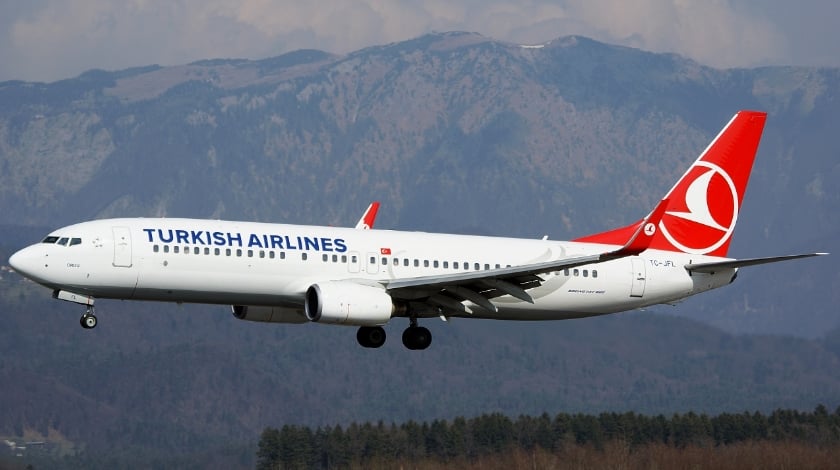Photo: planespotters.net
Reading Time: 2 minutesTurkish Airlines recorded a net loss of 1.894 million lira ($644 million) for the first half-year ended June 30, compared to a profit of 1.035 million lira for the same period a year ago.
The Star Alliance member had experienced “challenging conditions” in the tourism sector, including a series of terrorist bombings in Turkey, which depressed yields further due to decreased local demand, Turkish Airlines reported in its consolidated balance sheet statement.
In the second quarter, Turkey’s flag carrier posted a net loss of 656 million lira, compared to a 661-million-lira profit for yhe year-ago period.
Turkish Airlines said lower fuel prices and increased capacity continued to put pressure on yields. Newly opened long-haul routes decreased yields further.
Half-year revenue was up to 13.5 billion lira compared to 12.3 billion lira year-over-year (YOY), producing an YOY operating loss of 1.2 million lira compared to a 517-million-lira profit. Earnings before interest and taxes dropped significantly: 13 points from 4.9% to -8.1% YOY.
Turkish Airlines CEO Temel Kotil told ATW recently the carrier was feeling pressure on yields as it grows its transfer business to compensate for a drop in local demand caused by political and economic instabilities in Turkey and Europe. For the first half, international-to-international transfer passengers increased by 16.9% YOY at the carrier’s hub Istanbul Ataturk Airport.
First-half traffic rose 7.8% YOY to 71.9 billion RPKs on a 14.1% increase in capacity to 97.6 billion ASKs, producing a load factor of 73.7%, down 4.3 points YOY. Passenger numbers were up 4.4% YOY to 35.9 million passengers.
The carrier added that active capacity-management measures include reducing frequencies and downgauging aircraft size on several routes, measures needed to preserve network integrity.
New tourist destinations such as the Seychelles; Havana, Cuba; Hanoi, Vietnam; Bogota, Colombia; and Panama should help to support winter season.
By the end of July, Turkish Airlines’ number of destinations rose YOY to 290 from 276. The number of widebody aircraft in its fleet increased YOY from 69 to 86. Narrowbody aircraft rose YOY from 211 to 236 and cargo aircraft increased from 9 to 11.
For full-year 2016, Turkish Airlines will add five Airbus A330-200s, seven A321s and one A330-200F, and six Boeing 777-300ERs and 14 737-800s to its fleet.
Turkish Airlines is targeting a figure of 61.2 million passengers carried in 2016.

